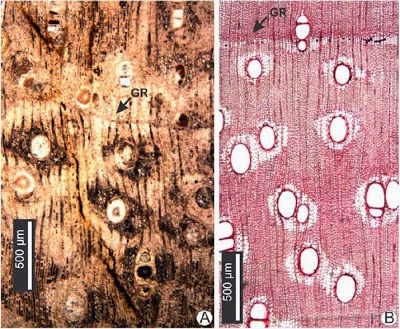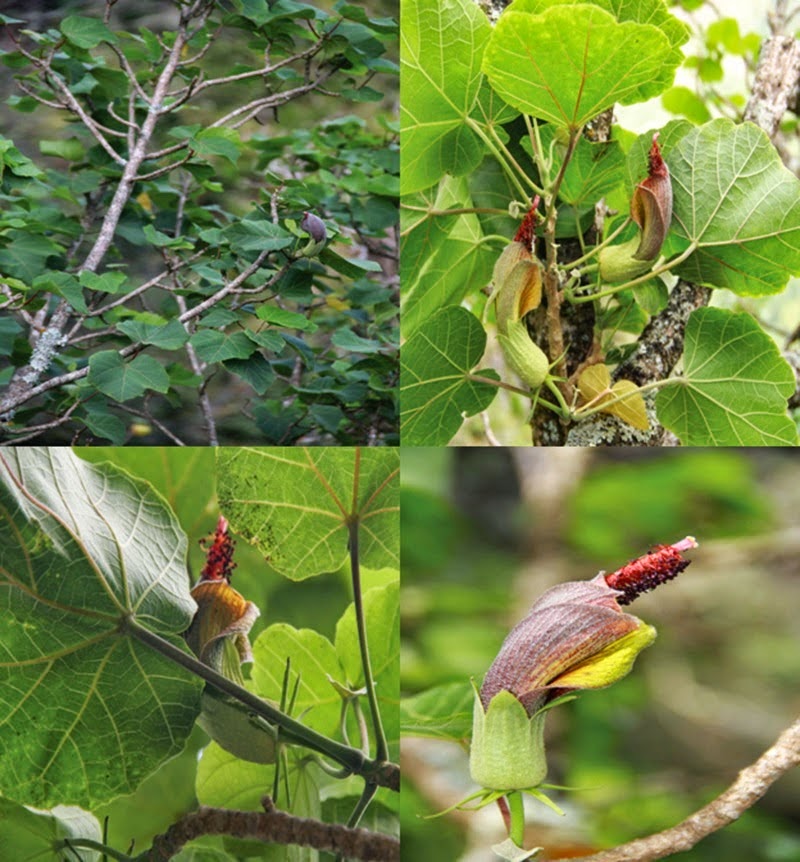The Bikaner District of Rajasthan is today located deep within the
Thar Desert of northwest India. The area has an annual precipitation of 260-440
mm, with temperatures of 28-48.5°C in the summer and 5-23.2°C in the winter.
However fossil evidence suggests this has not always been the case, with
deposits from the Early Eocene suggesting that the district then had a warm
humid climate, with some areas encroached by the sea.
In a paper published in the Journal of the Geological Society ofIndia in August 2014, Anumeha Shukla, RC Mehrota and JS Guleria of the BirbalSahni Institute of Palaeobotany describe a fossil Hibiscus leaf from the Early
Eocene Marh Formation at the disused Prem Lata Gupta Clay Mine, which is
northeast of Kolayat on Kolayat-Bikaner road.
The fossil is referred to the genus Kleinhovia, which currently contains two species, the extant Kleinhovia hospita,
which is found in the tropics of Africa, Asia, Indonesia and Australia, and Kleinhovia basitruncata from the Early
Eocene of Hokkaido. Of the two the Rajasthan specimen more closely resembles
the modern species, but is placed in a new species of its own Kleinhovia bikanerensis, meaning ‘from
Bikaner’.
Fossil leaf of Kleinhovia
bikanerensis showing shape and size. Scale bar is 1 cm. Shukla et al. (2014).
The modern Kleinhovia hospita is
an upright tree with a dense, rounded crown that produces sprays of pink
flowers. It is an evergreen tree growing in warm, humid environments, unlike
the arid terrain found in Bikanar today. In the Eocene the area is thought have
been on or near the northern coast of an island continent, but since then India
has collided with Eurasia, leading to uplift in the Himalayas and on the
Tibetan Plateau, resulting in an arid and seasonal climate across much of
northern India.
Modern leaf of Kleinhovia
hospita showing similar shape and size as inthe fossil. Shukla et al. (2014).
The Hibiscus family, Malvaceae, is thought to have originated and
diversified on the ancient continent of Gondwana, on or as it broke up into its
component parts (South America, Africa, Madagascar, India, Australia,
Antarctica and New Zealand) and the modern distribution of Kleinhovia hospitawould seem to support this. However the only
fossil described from the genus Kleinhovia
to date came from the Early Eocene of Japan, which is problematic as Japan was
never part of Gondwana, and in the Eocene had never been particularly close to
any part of it. The presence of Kleinhovia
basitruncata fits better with standing palaeobiogeographical models, in
that we would expect to find fossils from the genus on at least one of the
Gondwanan continents, and probably on one which it is still present, though it
does not help to explain the mystery of the Japanese Kleinhovia basitruncata.
See also…
Diptocarps, Dipterocarpaceae, are the dominant trees of modern South
and Southeast Asian rainforests, and are also found in South America, Africa
and Madagascar. The group reach their maximum diversity today on the island of
Bornea, where there are over 280 described species of Diptocarp, but the
earliest fossil Diptocarps from Southeast Asia date back only as far as the
Oligocene, whereas fossil Diptocarps appear in western India in the Early
Eocene.
India separated from Africa about 130 million years ago, and was
effectively an island continent until its collision with Eurasia in the Middle
Cenozoic. Nevertheless the modern flora and fauna of India show strong
affinities...
Hibiscus trees of the genus Hibiscadelphus are known only from
the Hawaiian Islands, to which they are endemic. Like many Hawaiian
plants and animals they have fared badly due to human activities,
notably the introduction of non-native species that either outcompete
indigenous species or modify their environment irreversibly. Of seven
previously described species of...
Follow Sciency Thoughts on Facebook.





